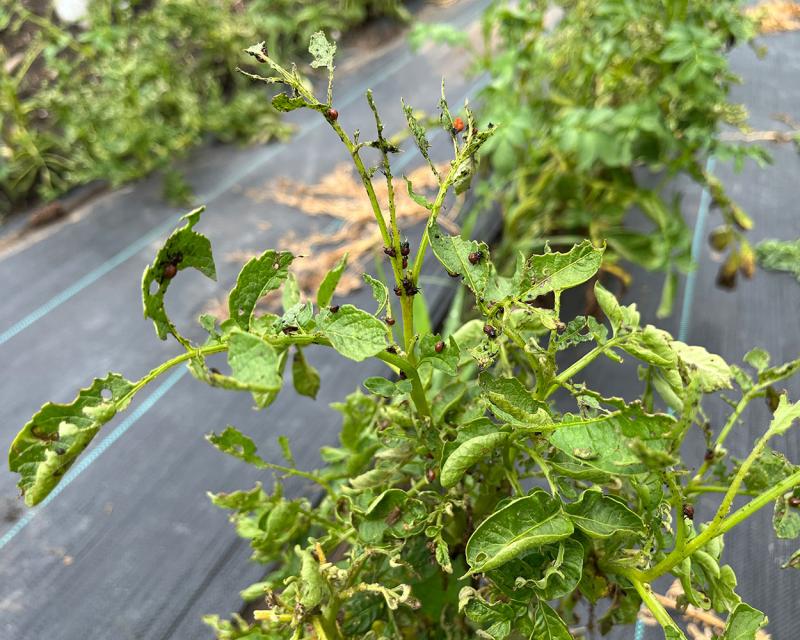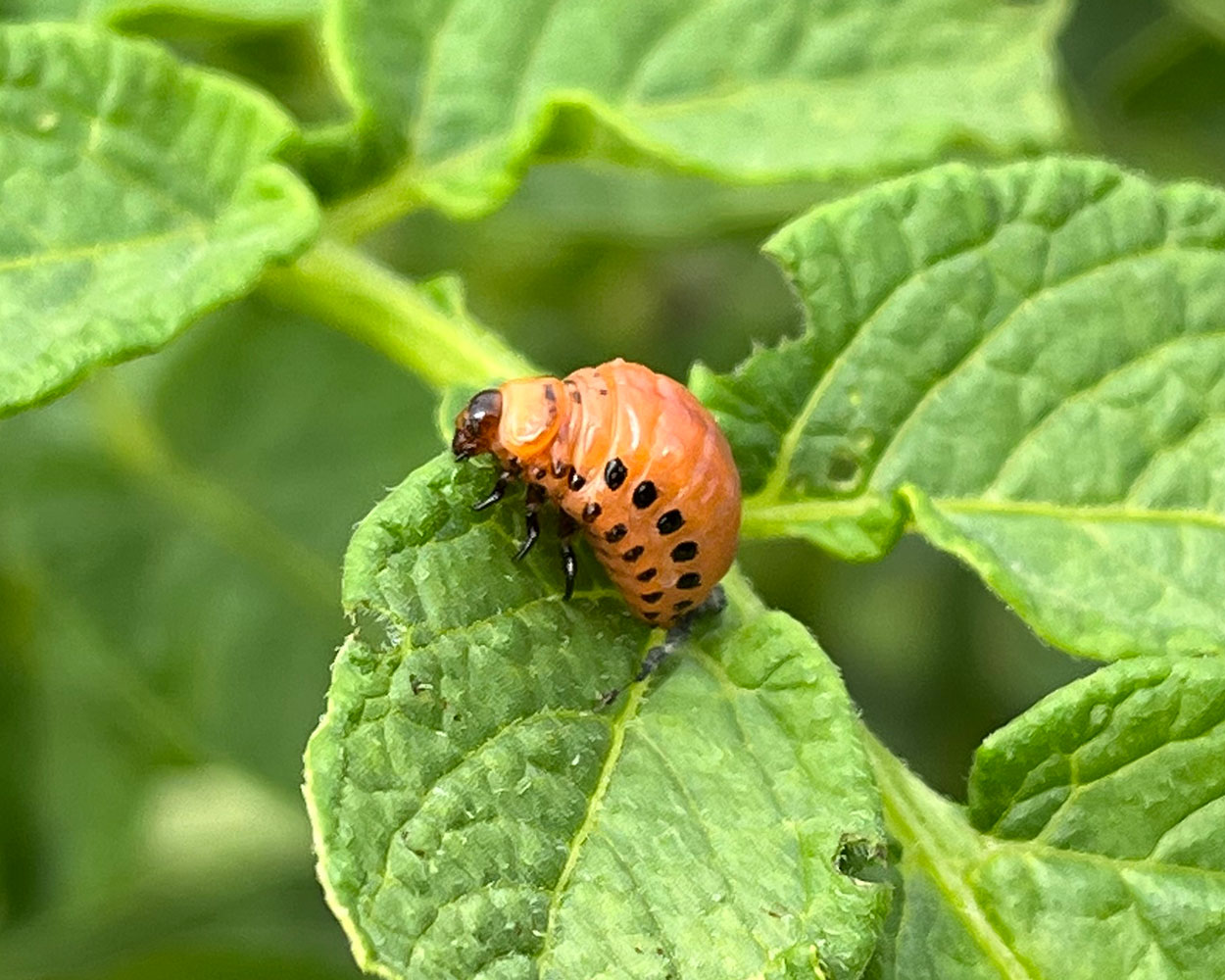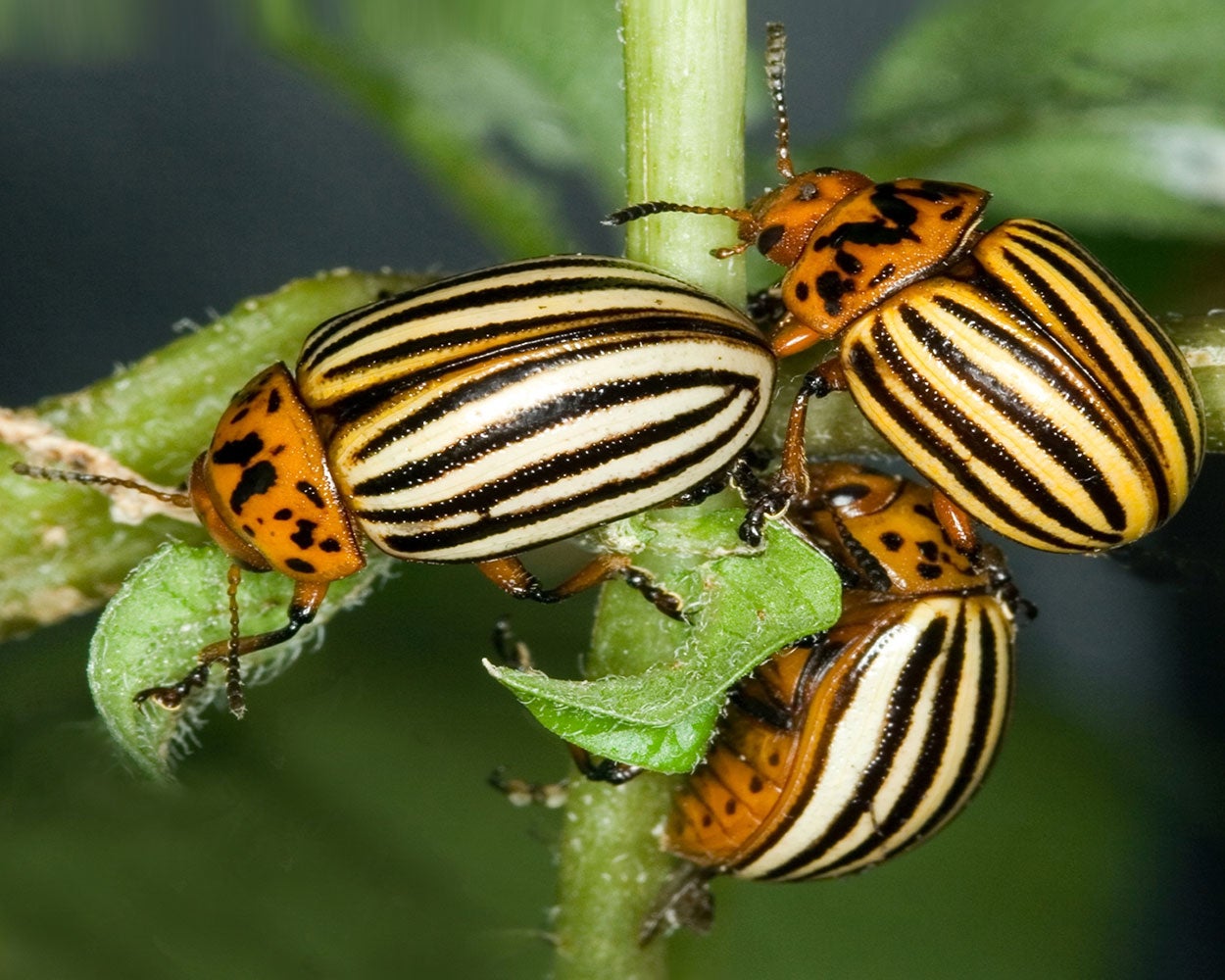
Written with contributions by Shelby Pritchard, former SDSU Extension Pest Management Specialist.
Originally Submitted: July 18, 2022
Colorado potato beetles are currently active in South Dakota. These beetles are a major pest of potatoes and other members of the nightshade family, including tomatoes, peppers and eggplants. Colorado potato beetles feed on the leaves and can cause severe defoliation of infested plants (Figure 1). In the absence of garden hosts, they will feed on weeds, such as buffalo-bur and ground cherry.
Profile
Colorado potato beetles overwinter as adults that emerge in the spring to feed on newly sprouted plants. In South Dakota, there can be one to two generations of Colorado potato beetles per year. They are most prevalent by midsummer, when both larvae and adults will be present. Larvae and adults feed on leaves of host plants; however, the later-stage larvae are responsible for approximately 75% of plant defoliation.
Larvae of the Colorado potato beetle start out as red and will turn pink as they mature. All larval stages will have a black head and two rows of black spots on each side of the body (Figure 2). Adult Colorado potato beetles are oval in shape and approximately 3/8 of an inch long. They have an orange head and prothorax (i.e. segment behind the head) as well as an orange underside. The prothorax will have black markings present. The elytra (hardened forewings) are cream-colored with five black stripes on each side (Figure 3).


Management
Preventive methods for managing Colorado potato beetles include planting early maturing varieties and keeping your garden clean of weedy hosts. As the growing season progresses, scout potatoes and other host plants for signs of defoliation and the presence of Colorado potato beetles. Potatoes can tolerate 30% defoliation during the vegetative stage without any issue. However, when tubers begin to bulk, the plants can only tolerate 10% defoliation. Tuber bulking occurs shortly after the plants flower. If the defoliation thresholds have been reached, and Colorado potato beetle larvae or adults are observed on plants, further management may be necessary.
Adults and larvae can be removed by hand and destroyed if there is a limited number of plants to scout. This process is not realistic for larger gardens, which will require alternative methods. Insecticides containing the active ingredients azadirachtin (neem) or spinosad can be used effectively. It is important to note that Colorado potato beetles are resistant to products containing the active ingredients carbaryl, cypermethrin, deltamethrin, lambda-cyhalothrin, imidacloprid, permethrin and pyrethrins. If using an insecticide, closely monitor populations after application. If the application doesn’t kill Colorado potato beetles, reapply using a different active ingredient. Always remember to read product labels before application and follow all label directions.


